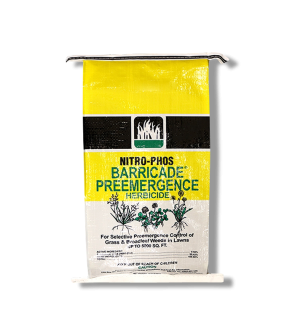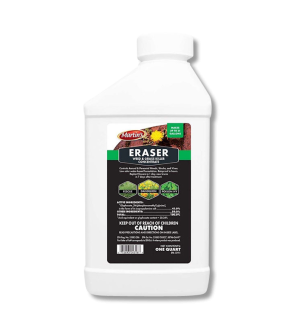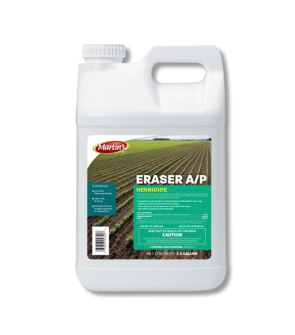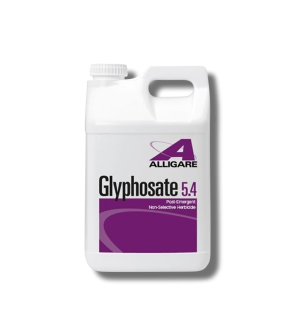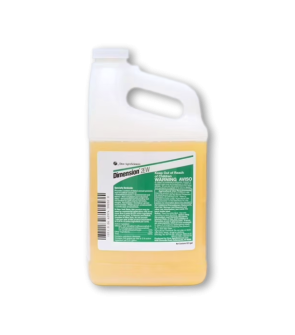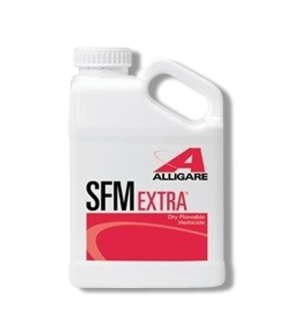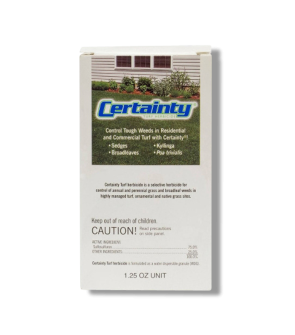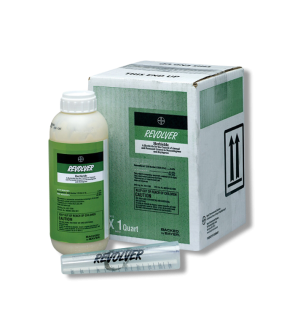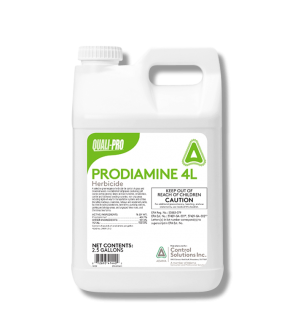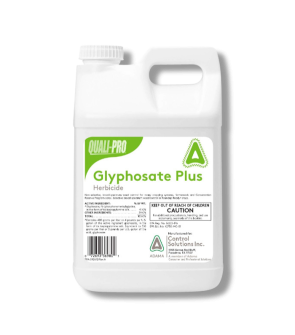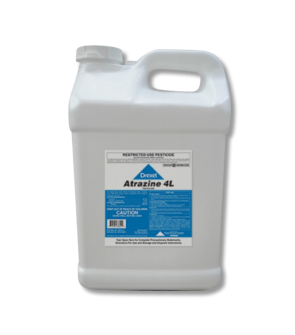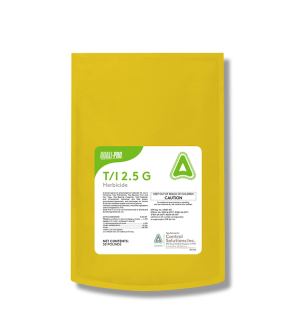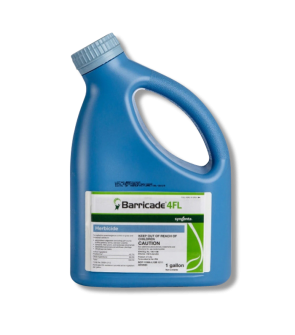Gain access to personalized product screening, the best pricing, rewards, and more!
Most Effective Products
Annual Bluegrass (Poa Annua) Control: How to Get Rid of Annual Bluegrass (Poa Annua)
This page is a general annual bluegrass (poa annua) control guide. By using the products and methods suggested, you will get control of the annual bluegrass (poa annua). Follow this guide, use the recommended products, and we guarantee 100% control of annual bluegrass.
In the springtime, when you start working again on your lawn and see the grass growing, it can be an exciting feeling to know that your hard maintenance work is finally paying off. However, sometimes looks can be deceiving, as is the case when annual bluegrass grass shows up uninvited.
Annual bluegrass is an annual weed commonly found in lawns and occasionally in gardens. Also known as poa annua, this plant is native to Europe but exists worldwide. Controlling annual bluegrass can be tricky, mainly because this weed can produce one hundred seeds in as little as two months. These seeds can lay dormant for several years before sprouting.
Annual bluegrass is generally an issue in residential yards because it appears in hot weather, resulting in brown spots in lawns during the peak of summer. This weed also thrives in cool weather while most lawn grasses are dying, meaning it has the potential to invade a vulnerable lawn.
If you have annual bluegrass in your yard, our step-by-step DIY treatment guide will show you how to get rid of poa annua quickly while saving money. It uses our professional-quality herbicides.
Identification
Because annual bluegrass (poa annua) can be mistaken for other weeds, such as creeping bentgrass, it is important to identify this weed to ensure total control properly. Here are some identifying traits to keep in mind:

- Annual bluegrass is a cool-seasoned annual weed that develops in low-growing clumps or a bunch-type pattern. When mature, they grow up to 6 or 9 inches in height.
- This weed has tall, light-green flattened stems that are bent at the base or midsection. The stems are often rooted at the lower stem joint. As the weed matures, it will produce white, feathery, tufted seed heads.
- Leaf blades are hairless, smooth, and have a rounded, slightly pointed, jagged leaf tip.
Reference the image above to ensure the weed you are dealing with is annual bluegrass or poa annua.
Inspection
Once you have confirmed that you are dealing with poa annua or annual bluegrass, you can move on to inspection. Determine where the annual bluegrass is thriving and the surrounding conditions helping it thrive so you know where to focus your herbicide application.

Where to Inspect
Annual bluegrass tends to exist in areas with moist or compact soil and somewhat shaded areas.
This weed grows commonly on lawns, sidewalks, fields, crops, ornamental landscapes, and other shaded areas.
What to Look For
Poa annua is a cool-season annual, meaning its life cycle starts in late summer or fall when soil temperatures reach about 70 degrees Fahrenheit and ends in spring.
As the annual bluegrass and native turf grow, clumps of annual bluegrass can easily be spotted as shades of green among the turf. After six to eight weeks, the weeds flower and spread seeds, then die after a drought.
Treatment
Be sure that you are properly protecting your skin and eyes with safety equipment when handling any type of herbicide. Goggles, gloves, and long-sleeved clothing should suffice. Annual bluegrass germinates in the late fall or early spring, so timing is critical to effectively controlling it.
Post-emergent herbicides or non-selective herbicides will work best in removing annual bluegrass. Keep in mind that non-selective herbicides will kill all plants they come into contact with, including the desired ones.
Step 1: Mix Herbicide

Blindside Herbicide is a selective post-emergent herbicide that suppresses annual bluegrass in cool-seasoned and warm-seasoned turf.
To control annual bluegrass in cool-seasoned turf, use 0.075 to 0.15 oz. of Blindside Herbicide in 0.5 - 4.0 gallons of water per 1,000 sq. ft.
To control annual bluegrass in warm-seasoned turf, use 0.15 to 0.23 oz. of product in 0.5 - 4.0 gallons of water per 1,000 sq. ft.
Tolerant grasses for Blindside Herbicide include Kentucky Bluegrass, Tall Fescue, Bermudagrass, Centipedegrass, St Augustine grass, and Zoysiagrass.
Remember that this product may not eliminate annual bluegrass, which may require a herbicide like Certainty Turf Herbicide to be used.
If you are using Certainty Turf Herbicide, you may make applications to non-overseeded turf. You may also make applications on turf when you are planning to overseed it with perennial ryegrass.
For selective control with Certainty Turf Herbicide in non-overseeded turf use 1.25 to 2.0 oz. of product per 100 gallons of water per acre.
To make applications prior to overseeding turf with perennial ryegrass apply 2.0 oz. of product per 100 gallons of water per acre.
Mix and apply either of these products with a handheld pump sprayer. For larger spray treatments, you would need to use a spray rig.
To mix, simply fill the tank with half the water, add a measured amount of herbicide, and then pour in the remaining half of the water. Close the tank lid and shake until evenly mixed.
Step 2: Spot Treatment with Herbicide
Once mixed, adjust your sprayer to a fan spray nozzle setting to apply a fine coating to the annual bluegrass.
Spray the top and bottom of the weed leaves until wet, but not to the point of runoff.
These products will work best when the annual bluegrass is young and actively growing. As the weed matures, it becomes more resistant to chemicals, which may require repeated applications.
If needed, reapply Blindside Herbicide when 14 to 20 days have passed from the previous application.
Weeds treated with Certainty Turf Herbicide can be retreated when 4 or more weeks have passed after the first treatment.
Prevention
Once annual bluegrass has been eliminated from your property, you will need to implement preventative measures to ensure that it does not return.
- You can prevent annual bluegrass with a pre-emergent like Barricade Pre-Emergent Herbicide Prodiamine Granular. Depending on your turfgrass type, Barricade can be applied at a rate from 1.5 to 4 pounds per 1,000 sq. ft. Measure the square footage of your lawn to determine how many products you will need. Once you have measured and calculated the area, load the appropriate amount of Barricade into a broadcast spreader at the right calibration and apply it to your lawn until it is evenly spread. After broadcasting the granules, you should water and activate them with at least 0.5 inches of water.
- Addressing areas of compacted soil and ensuring it is not too wet is important for lessening the chances of poa annua making a comeback. Also, making sure not to mow your grass too low can help.
- Be mindful of how tall your grass is when mowing the lawn. Annual bluegrass can reseed with less than an inch of grass, and surrounding it with taller grass will shorten its survival chances.
- Annual bluegrass tends to live in moist and compact areas. Adjust irrigation practices to 1 inch once per week to avoid overwatering your lawn.
Key Takeaways
What is Annual Bluegrass or Poa Annua?
- Annual bluegrass, or poa annua, is a grassy weed that germinates in late summer or early fall and produces seeds in the spring. It can be easily recognized by its clumping habit and tall, tasseled seed stalk. It is known to frustrate yard owners with its persistence.
How To Get Rid of Annual Bluegrass or Poa Annua in Your Yard
- If Annual Bluegrass is already established and growing on your lawn, we recommend a post-emergent treatment with Blindside Herbicide or Certainty Turf Herbicide.
Preventing Annual Bluegrass (Poa Annua) Reinfestation
- We recommend applying a pre-emergent to your lawn, such as Barricade Pre-Emergent Herbicide Prodiamine Granular, with a handheld sprayer in the early spring. This will prevent Annual Bluegrass seeds from growing. Proper lawn care maintenance that addresses soil compaction, drainage issues, and nitrogen rates will also be important to keep your turf strong and choke out poa annua.









